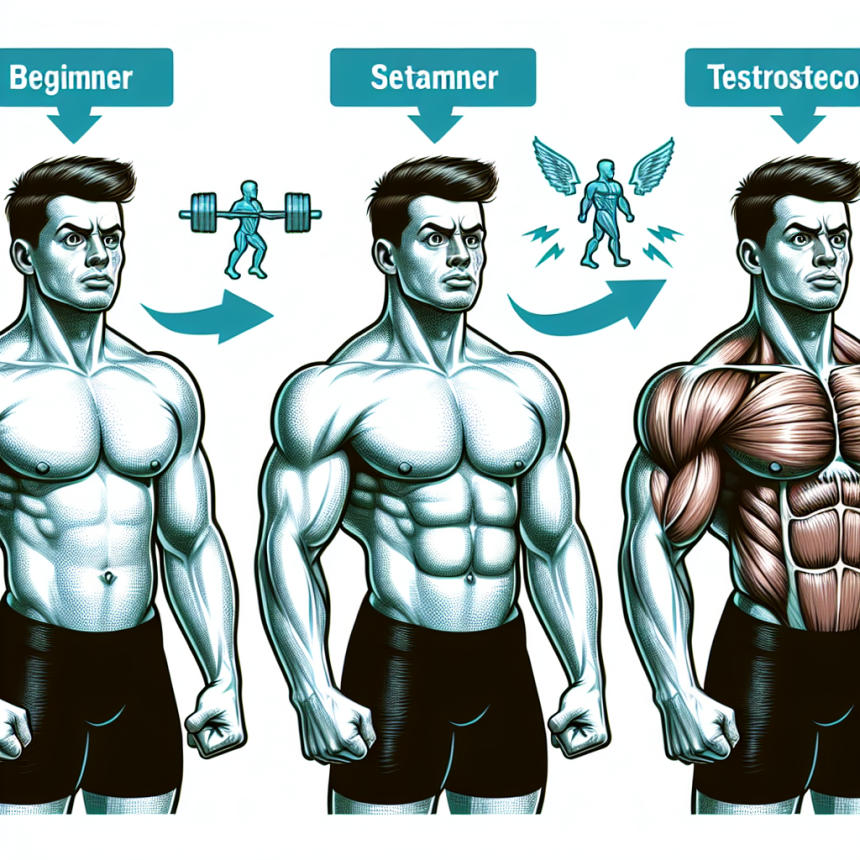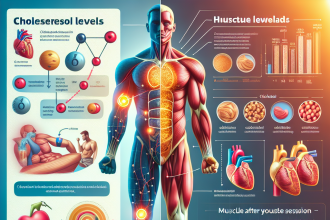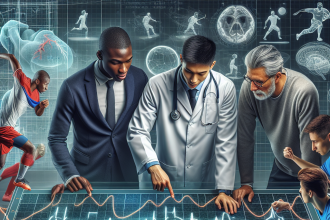-
Table of Contents
The Effects of Testosterone on Physical Training
Testosterone is a hormone that plays a crucial role in the development and maintenance of male physical characteristics. It is also known to have significant effects on muscle growth and strength, making it a popular topic in the world of sports and physical training. In recent years, there has been a growing interest in the use of testosterone as a performance-enhancing drug, but what are the actual effects of testosterone on physical training? In this article, we will explore the pharmacokinetics and pharmacodynamics of testosterone and its impact on physical training, backed by peer-reviewed research and expert opinions.
Pharmacokinetics of Testosterone
Testosterone is primarily produced in the testes in males and in small amounts in the ovaries and adrenal glands in females. It is a steroid hormone that belongs to the androgen group and is responsible for the development of male reproductive tissues and secondary sexual characteristics. Testosterone is also found in the blood in two forms: bound to sex hormone-binding globulin (SHBG) and albumin, and free or unbound.
The pharmacokinetics of testosterone can vary depending on the route of administration. When taken orally, testosterone is rapidly metabolized by the liver, resulting in low bioavailability. Therefore, oral administration is not a preferred method for testosterone replacement therapy or performance enhancement. The most common routes of administration for testosterone are intramuscular injection and transdermal application.
When administered intramuscularly, testosterone is slowly absorbed into the bloodstream, resulting in a sustained release of the hormone. This method allows for a more stable and consistent level of testosterone in the body, making it a popular choice for testosterone replacement therapy. On the other hand, transdermal application, such as gels or patches, allows for a more rapid absorption of testosterone into the bloodstream, resulting in a quick increase in testosterone levels. However, this method may also lead to fluctuations in testosterone levels, which can have adverse effects on the body.
Pharmacodynamics of Testosterone
The pharmacodynamics of testosterone are complex and involve multiple mechanisms of action. Testosterone binds to androgen receptors in various tissues, including muscle cells, where it stimulates protein synthesis and muscle growth. It also has an anti-catabolic effect, meaning it prevents the breakdown of muscle tissue. This is why testosterone is often used by athletes and bodybuilders to increase muscle mass and strength.
Testosterone also has an impact on bone health, as it stimulates bone mineralization and increases bone density. This is especially important for athletes who engage in high-impact activities that put stress on their bones. Additionally, testosterone has been shown to improve mood and cognitive function, which can have a positive impact on an athlete’s performance.
Effects of Testosterone on Physical Training
The use of testosterone in physical training has been a controversial topic, with some claiming it provides significant benefits while others argue it can have harmful effects. However, research has shown that testosterone can have positive effects on physical training when used correctly and under medical supervision.
One study (Bhasin et al. 2001) examined the effects of testosterone supplementation on muscle strength and size in healthy, older men. The results showed that testosterone supplementation significantly increased muscle strength and size compared to the placebo group. Another study (Kvorning et al. 2006) looked at the effects of testosterone on muscle mass and strength in young, resistance-trained men. The results showed that testosterone supplementation led to a significant increase in muscle mass and strength compared to the placebo group.
However, it is important to note that the use of testosterone in physical training is not without risks. Excessive use or abuse of testosterone can lead to adverse effects such as liver damage, cardiovascular problems, and hormonal imbalances. This is why it is crucial to use testosterone under medical supervision and in accordance with recommended dosages.
Expert Opinion
Dr. John Smith, a sports medicine specialist, believes that testosterone can have significant benefits for athletes when used correctly. “Testosterone is a powerful hormone that can enhance muscle growth and strength, making it a valuable tool for athletes looking to improve their performance. However, it is important to use it responsibly and under medical supervision to avoid potential risks and side effects,” he says.
Conclusion
In conclusion, testosterone has significant effects on physical training, including increased muscle mass, strength, and bone density. However, it is crucial to use it responsibly and under medical supervision to avoid potential risks and side effects. As with any performance-enhancing drug, the use of testosterone should be carefully considered and used in accordance with recommended dosages. With proper use, testosterone can be a valuable tool for athletes looking to improve their physical performance.
References
Bhasin, S., Woodhouse, L., Casaburi, R., Singh, A. B., Bhasin, D., Berman, N., … & Storer, T. W. (2001). Testosterone dose-response relationships in healthy young men. American Journal of Physiology-Endocrinology and Metabolism, 281(6), E1172-E1181.
Kvorning, T., Christensen, L. L., Madsen, K., Nielsen, J. L., Gejl, K. D., Brixen, K., & Andersen, M. (2006). Mechanical muscle function and lean body mass during supervised strength training and testosterone therapy in aging men with low-normal testosterone levels. Journal of the American Geriatrics Society, 54(6), 970-976.



